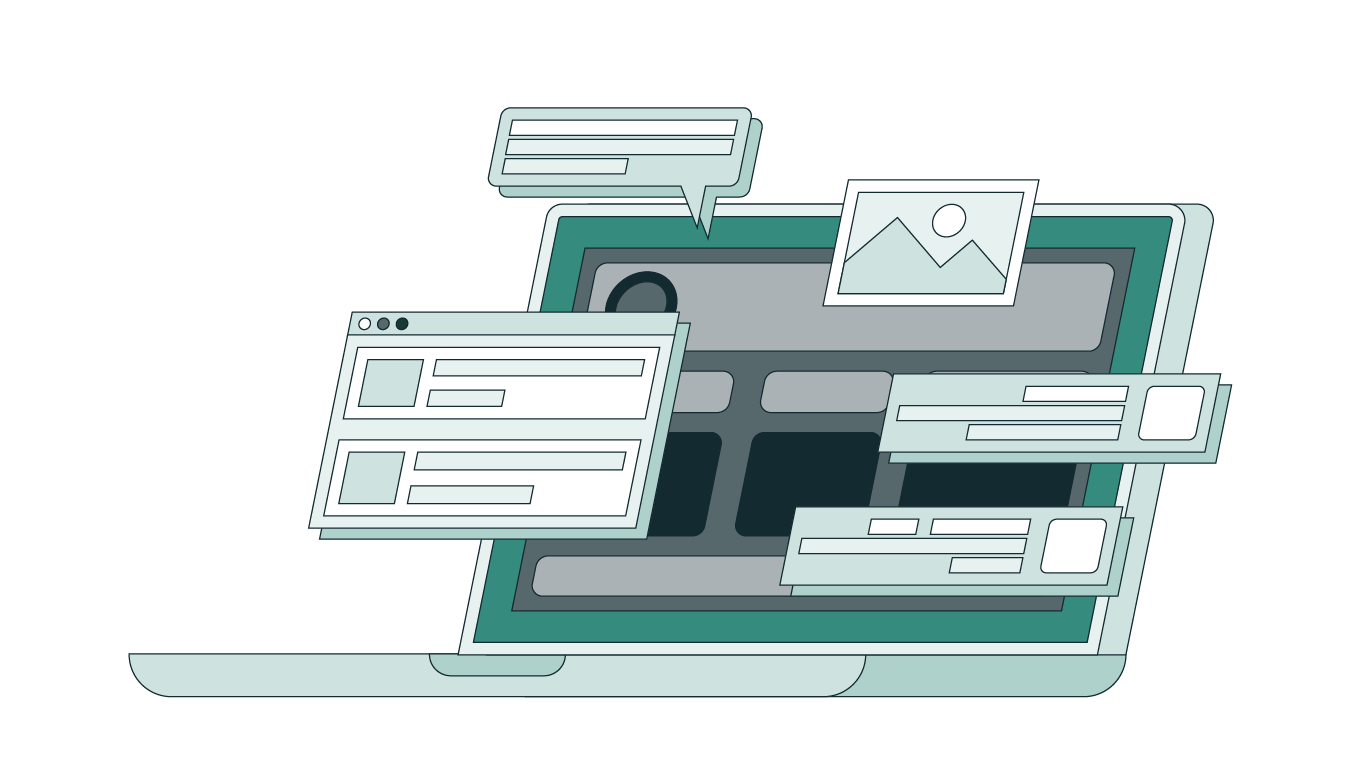There are many channels through which issuers can engage shareholders, and a well-designed and optimised IR website is one of the key weapons in the IRO’s arsenal. IR Magazine found that almost 80% of officers found these sites an effective tool in engaging institutional investors, with 62% saying that the site helped them interact with retail investors.
And the feeling is mutual. The study found that 65% of institutional investors felt IR websites were useful when considering whether to invest in a company, with 63% saying they were helpful for engaging with issuers in whom they already invest. This emphasises the importance of creating a truly captivating resource for current and potential shareholders. In this article, we will go over the most effective investor relations website best practices that you can use to create an effective IR platform.
|
Table of Contents
|

Why you need an investor relations website today
Humans generate 3.5 quintillion bytes of data on the internet every single day. And because there is so much user-generated content, it can sometimes be difficult to find the truth behind the rumours, speculation and misinformation. When you create an investor relations website, you present to the world your one source of truth. It becomes the destination for shareholders looking to find accurate data and information. Best of all, you control the narrative.
Given the number of shareholders who find this type of engagement helpful for informing their investment decisions, having an IR website is essential as a lead generation tool. It provides a repository for all of the resources that help to promote your business to investors, making it easy for them to find what they need in order to assess the suitability of your offering.
Keeping this website up-to-date presents your company as transparent and open with regard to financial matters. It also shows your willingness to engage with investors and analysts, which can reassure them that you value their input and investment. This leads to better connections with your shareholders.
How to develop an effective investor relations website
There are numerous considerations to make when developing your IR website. To break this down into easily digestible chunks, here are the three main areas you must cover and detail of what is involved within each.
Key elements
Here are the essential components of an effective IR website.
| Element | Explanation |
| About us | This is the section where you effectively pitch your company’s story. Storytelling is key to engagement and influence, so use this page to tell them about the company, its history, its future, its structure and its executives. Add a presentation and other eye-catching content to highlight your mission and goals. |
| Financial information | One of the main reasons that investors will visit the site is to see your financial reports, and that is why this is an essential page. Make it easy to find and access your latest reports, along with a summary of the key points. Allow them to access previous reports from your archive, too. |
| Stock market information | There are multiple benefits to adding your live share price to your website, including increased investor trust and convenience for shareholders looking to benchmark your performance against the industry. Use My Share Price Live to embed a fully customisable and brand-compliant widget on your page. |
| ESG story | Your ESG story communicates your environmental, social and governance credentials to investors. You should highlight your sustainability efforts, the processes in place to deliver your ESG goals and your non-financial reporting metrics. |
| Contact | It should be clear how investors can contact you should they want to discuss the information on the website in more detail. Make it as easy as possible to facilitate the next level of interaction between the company and the potential shareholders. |
Design, usability and accessibility best practices
Aside from the written content, there are a host of technical best practices that will help engage your users with your offering. These include:
| Element | Explanation |
| User-friendly design and navigation | You need to make it straightforward for investors to find the resources they need and answer the questions that they have. An over-engineered site might look good, but it is ineffective if it puts potential investors off because it does not work intuitively. |
| Keep submenus to a minimum | Simplicity is the key if you want to engage your audience with the content on your website. Submenus complicate the structure and mean unnecessary additional actions are required of your users. This can lead to impatience and poor user experience that could affect their perceptions of the business. |
| Video and infographics | Users can find a wall of text on a website unenticing, so make sure you break it up with visually stimulating content. Infographics and videos capture the attention of your audience and encourage engagement. In fact, 92% of video marketers told a recent survey that video gives them a positive ROI. |
| Mobile device compatible | Internet use is split relatively evenly between mobile and desktop devices. This means that, if you do not provide an adequate service for mobile users, you will alienate half of your potential viewers. Make sure your site is compatible for all users. |
| Implement IT security measures to prevent hacking | Utilising SSL encryption, requiring multi-factor authentication for users’ log-in details, ensuring you patch or upgrade software when necessary and training your teams on cybersecurity protocols can protect your IR website from attacks and loss of data, downtime and other potential issues. |
Compliance Considerations
One of the key investment risks in any company is compliance, and investors need to know that your business does all it can to mitigate these risks. This includes all areas of the organisation, from the board to the IR website.
Failing to ensure that your website adheres to the local regulation and legislation in the countries in which you are based is an immediate sign that the issuer is not as compliance-focused as it could be.
Research your obligations under the General Data Protection Regulation (GDPR) and other key legal requirements to implement them within your IR site.

How to make your IR website stand out
- Clearly communicate your company’s financial performance and strategy to investors. Be open and honest, and start the relationship on the right footing to allow them to make well-informed investment decisions.
- Provide up-to-date and relevant news and events related to your company. This keeps your investors in the loop and makes them feel part of the organisation and valued by it.
- Include investor-friendly content, such as shareholder presentations. These are informative files that are purposefully designed to appeal to investors. By adding them to your IR website, you increase the reach of the presentations and provide helpful information to users.
- Provide a comprehensive view of your share price data in real time. This is helpful to shareholders who want to understand the dividend-yield calculation, track performance and gauge market sentiment. They can also use it to assess risks and calculate optimum entry and exit points.
- Provide an option for investors to sign up for alerts and updates in order to be able to engage them further. Having their consent to contact them directly allows for easier investor targeting and further networking to take place.
- Make the investor relations section easy to find from your website’s homepage, as that might well be the first place an investor or analyst arrives when searching for the information they need and planning their investment strategy. Make it an extension of the brand website and simple to reach.
- Include a clear call-to-action for investors, such as a contact form or your investor relations team’s contact information. Anything you can add to your site that makes it as simple as possible to facilitate conversation is a positive feature of your IR strategy.
- Implement an investor relationship management system. Using the sign-up form, you can add the details of users in this CRM, which stores details of your interactions that you can use to inform targeting, roadshow scripts and other IR activity.
- Educate investors to build confidence in the company strategy. Engage them with your story and make it feel like an opportunity they cannot miss out on.
FAQ
What are strategies to engage your investors?
Outreach is an effective way to keep investors engaged. Ask them for their thoughts, concerns and questions to maintain a conversation with them. Regular updates in a range of media should be another key element of your communication plan, as should making the materials that they need for research purposes as easy to find and use as possible.

What are the common mistakes to avoid when building an investor relations website?
Concentrating on style over substance is a mistake that many organisations make with IR websites. The important aspects are those that help investors find the information they need and that engage them with content relevant to the business and their investment. Leaving out ESG reporting is another way to disengage investors.
What do investors and analysts expect from an IR website?
Investors and analysts expect to find tangible data and information regarding the company, its performance, its aims and the reasons why they should invest. It should tell them about the value they will receive from the investment and back that up with evidence.
ConclusionWe hope the above investor relations website best practices will help you create a useful and effective site for bringing analysts and shareholders closer to the IR team and providing an opportunity to better engage them. Keeping the site simple and informative is key, as well as signposting the next steps for visitors to take so that IROs can lead them towards their investment. The IR site helps these stakeholders make decisions and building trust is essential for shareholder engagement. One tool you can use to do this is My Share Price Live. It enables you to display real-time share price performance in an interactive, customisable format that is fully aligned with your brand and website design. |
Related articles
-
Which ESG Metrics Should You Track? A Comprehensive Guide
Read the article -
New IESBA Standards – The Importance of Ethical Standards in Sustainability
Read the article -
The Benefits of Webcasting Your Capital Markets Day
Read the article
Share this post


